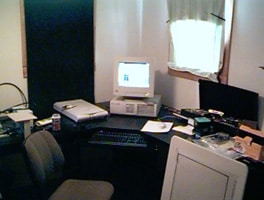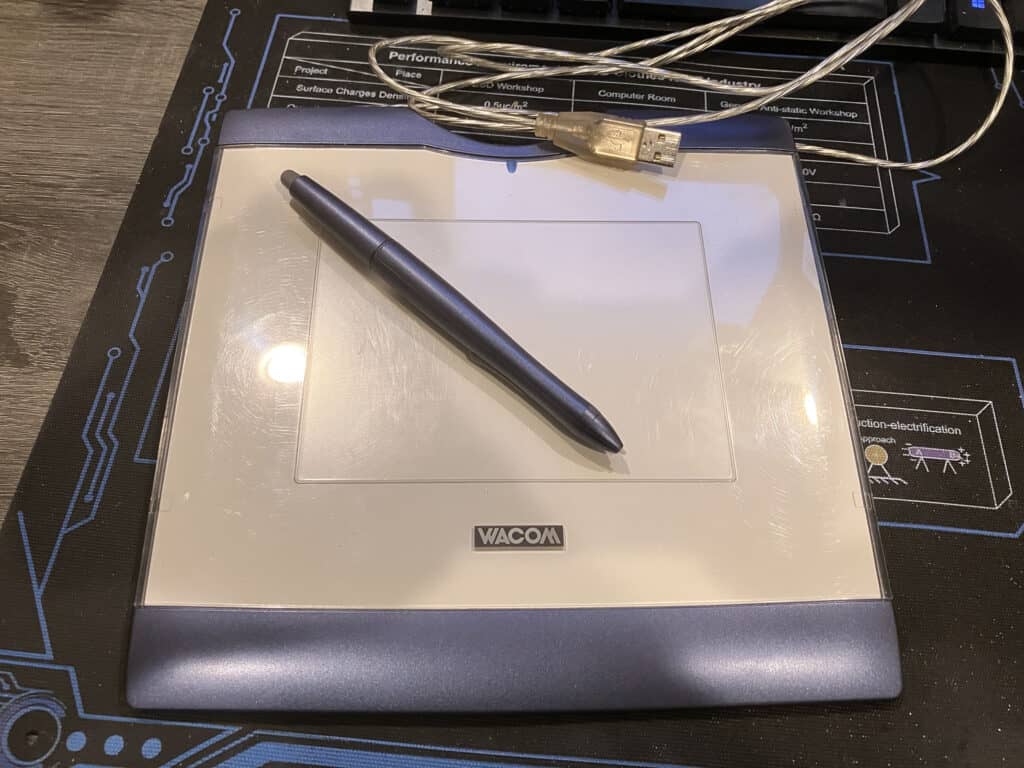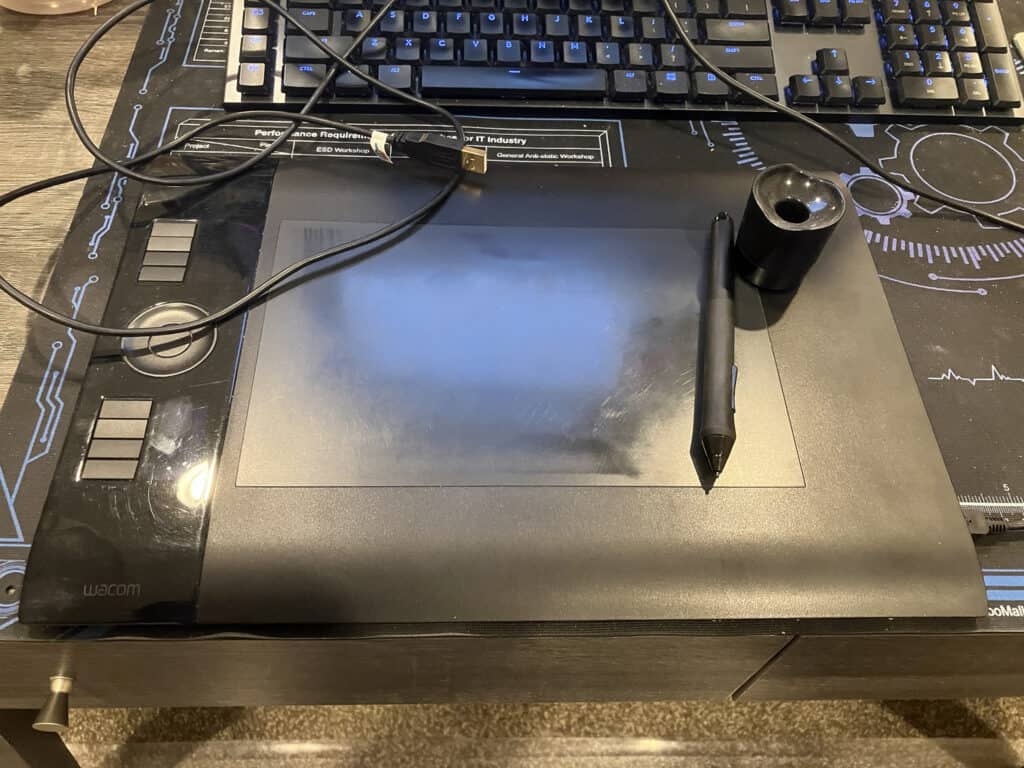My first ‘art’ on a computer was a code-based graphic of a pegasus, done on my ZX-81 – which was 64×46 pixels. It was basically digital needlepoint, where I’d made a grid on paper, filled in blocks where the pegasus would be, and then coded the whole array to display on the TV I used as a monitor… This would have been about 1982.
My first exposure to a ‘digital art tool’ was the KoalaPads they had on some Apple IIs at school in 1984. These were really primitive low-resolution pointing devices essentially, and I never did anything truly artistic with them, but they did serve to get me interested in alternative input mechanisms.
My first actual ‘digital art’ was via the mouse on a shipmate’s Macintosh he had in the barracks at Electric Boat, which would have been about 1987. Prior to this all I had really used was a keyboard, and it was actually tricky to retrain myself to move my right hand while watching a monitor. My best effort on the Macintosh was a helicopter flying over some mountains – but it was good enough to impress the guys in the barracks. 🙂
In 1988 I acquired an Amiga 500, and with that a copy of Deluxe Paint III – and this is where I really cut my teeth on digital art. Everything I did on the Amiga was done via a mouse, but the tools available were really similar to modern software with pallets of tools and colors, and the ability to use them in fairly high resolution.
The next digital art milestone came in 1996 when I acquired a Summagraphics Summagrid digitizer, which I used on my PowerMac 8100/100.

The problem with the digitizer it was designed for CAD work and while very precise, didn’t make a very good freehand device… And it was HUGE – so didn’t make the move to Virginia in 1997.
In 1999 I acquired my first Wacom – an Intuos 9×12. This was a bleeding-edge tablet that used the brand new USB connector, so I had to get a CardBus USB card for my PowerBook G3 to use it… The problem was that CardBus USB cards for Macs were rare, so I wound up using some sketchy Apple development driver that made PC CardBus cards work on the Mac…
During this time I did most of my artwork on paper, inked it, scanned it, and did the coloring in the laptop with the Wacom.
The Intuos was given to a friend when I moved back to Virginia in 2004, and when I picked up the PowerBook G4 after the move I also picked up a new Wacom Graphire 3 to go with it…

I chose the Graphire 3 because it was small and fit into the laptop bag. In hindsight it was a bit too small, but I made due with it for several years.
Which leads to my current Wacom, the Intuos4 ‘medium’ that I’ve been using since 2009…

As you can see by the picture, my current Wacom has about a million miles on it – I’ve just about worn through the active area on it in fact.
I figure I’d still be using this in 2030 if Wacom wasn’t playing games with the drivers to create some planned obsolescence to sell new tablets… There is no actual driver for the last two versions of MacOS for this tablet, but the old driver still (mostly) works so I keep using it.
I really need to upgrade, it’s just hundreds of dollars to do so and the economy is still kinda crap. Maybe for my birthday. 🙂
Listening to "Hangin' On" by LeBrock